
An old forest snag: Something to Cherish? Photo by Marian Blue
Snags abound in healthy forests.
Hazardous.
Dead.
Ugly.
And
Something to Cherish?
Today, many landowners cherish snags and, if none are present, create them by topping or even girdling trees.
Why would you want to keep this possibly dangerous eyesore on your property, much less create one?
Wildlife Habitat
According to the National Wildlife Federation, about 1,000 different species, nationwide, use snags. These uses are varied and essential.
- Home
Birds, mammals, insects, and even amphibians settle in these quarters. Pileated woodpeckers and other related species (known as primary cavity dwellers) create new cavities for their nests each year; snags provide softer and drier wood to carve away.
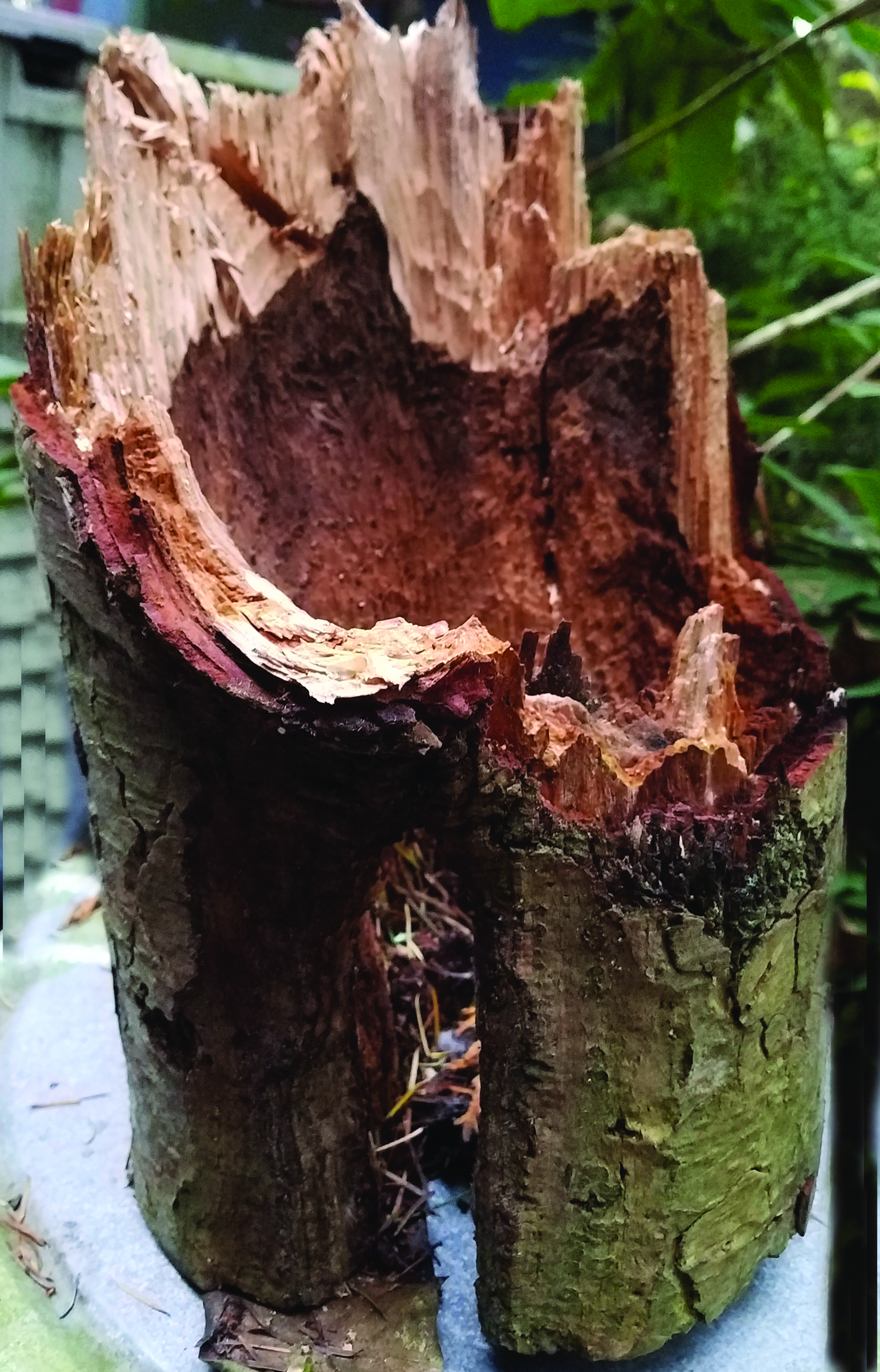
A toppled snag revealed a former nesting cavity, smoothed and enlarged with use. Photo by Marian Blue
Woodpeckers also create cavities when seeking insects that are attracted to the dead/dying snags as seen in the snag photo above.
Other critters (known as secondary cavity dwellers) include owls, raccoons, chickadees, squirrels, nuthatches, and others who often call them home as well as a dinner resource Washington Department of Fish and Wildlife.
Snags, in essence, are a foundation for good wildlife habitat.
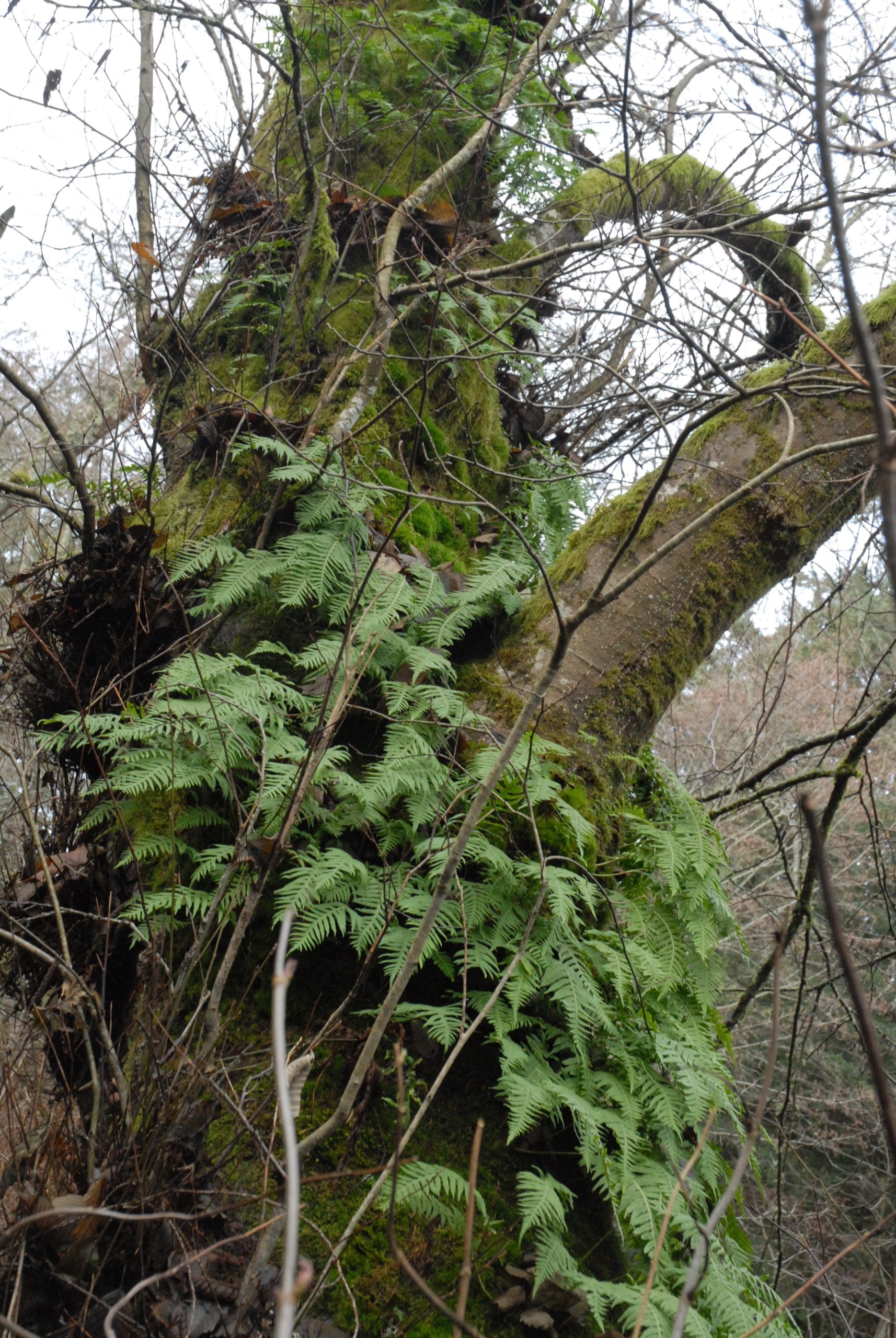
Snags provide lush growth with abundant food supplies.
- Food for plants and animals.
Snags grow fungi, moss and even plants. These gardens attract insects.
Although you wouldn’t want to share your home with them, insects attract a wide variety of insect-eating critters (birds, amphibians, reptiles, and mammals) and are essential to good wildlife habitat. The pacific tree frog, for instance, eats a variety of items, including moss, decaying vegetation, and insects. Raccoons, owls, and snakes eat frogs. A variety of other creatures also eat tadpoles and frog eggs. Thus, from moss to raptors, snags grow a habitat that suits many.
Good snags mean a healthy forest.
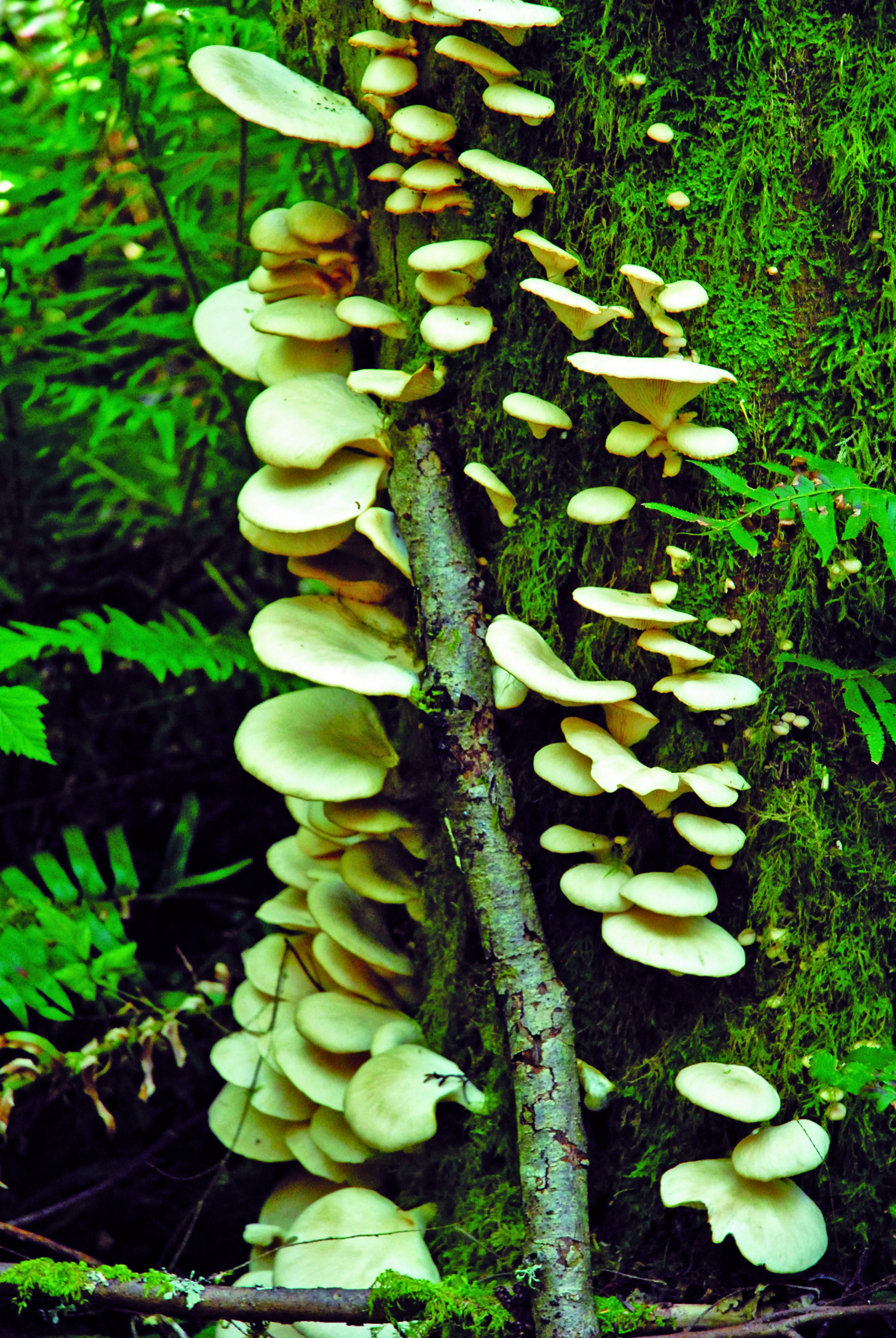
Many kinds of fungi love snags. Critters love fungi. Photo from Interpretative Guide to Western Northwest Weather Forecasts.
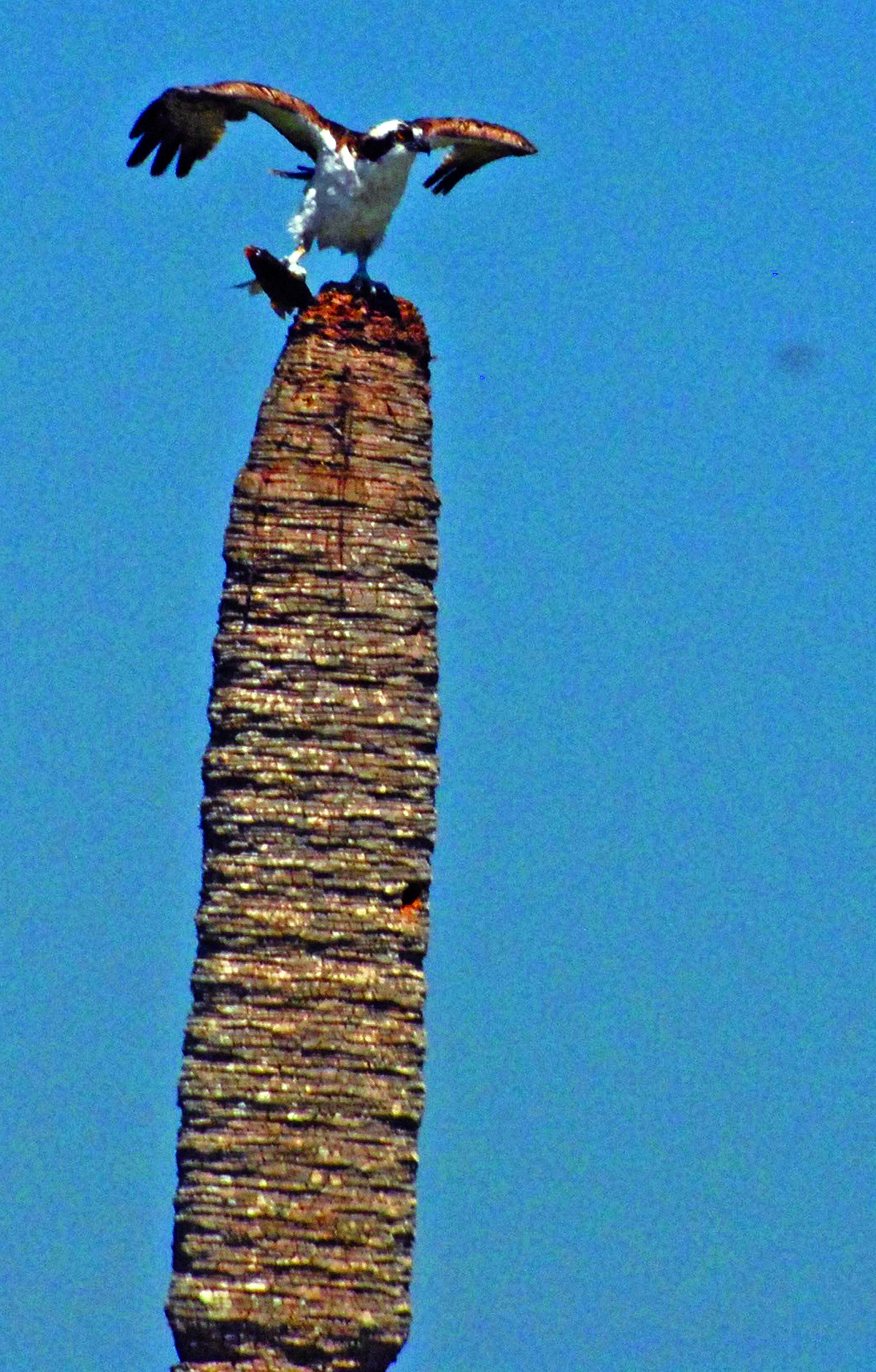
Predators find snags useful for lookout perches and even dining tables. Photo by Marian Blue
3. Hiding
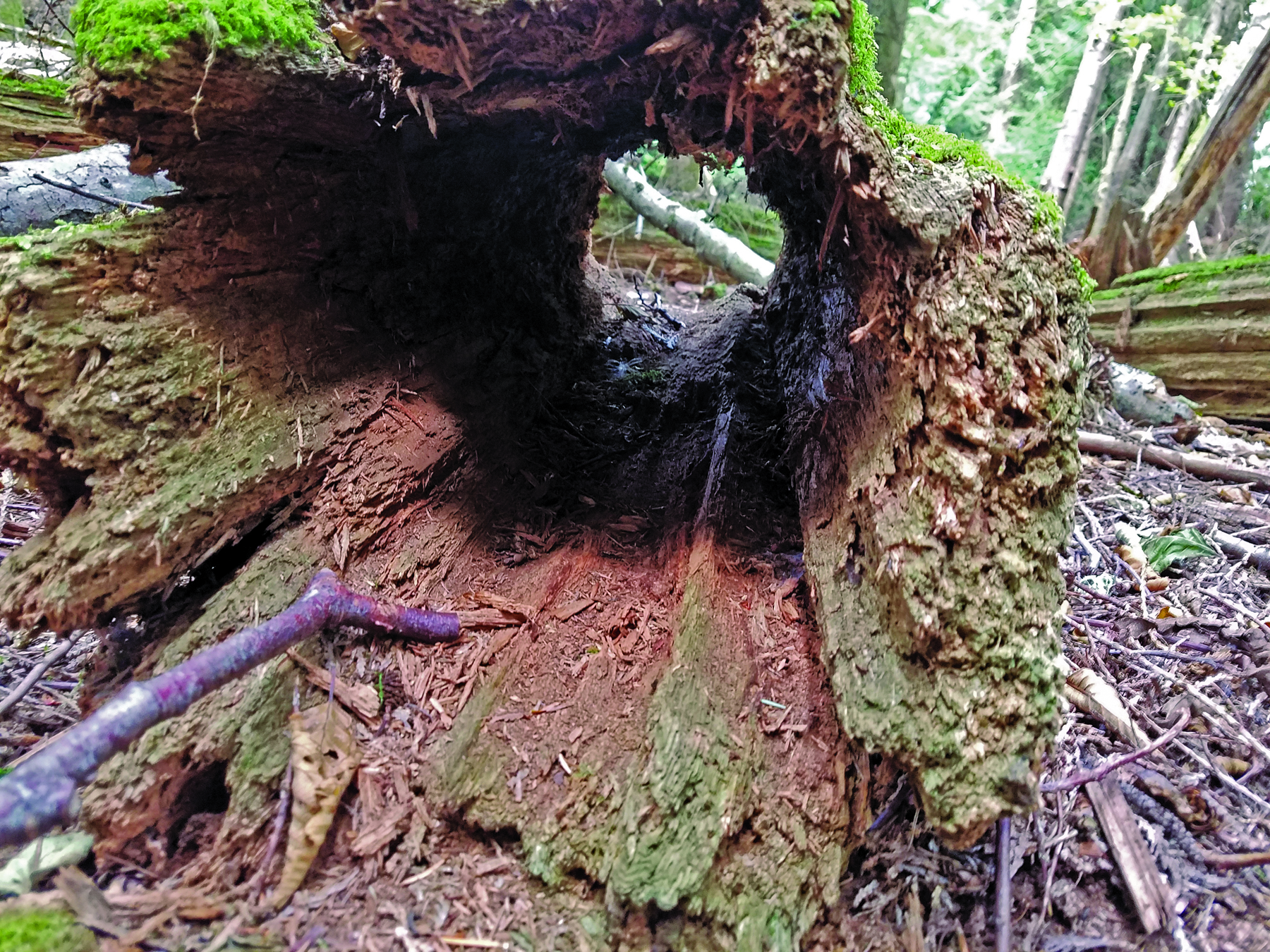
This cedar log has hollowed out, providing a hiding hole, food (moss), and a bounty of bugs and shelter underneath. Meanwhile, it’s providing a place for new growth. Photo by Marian Blue
Ducking for cover preserves the life of many small birds, squirrels, and other critters.
Snags provide look-out perches for predators, such as raptors, too.
Snags provide places to hide both when standing and after falling. The job of a snag extends beyond life, beyond falling, and even beyond decaying; nutriments that build soil occur as mosses and fungi break down the wood.
Forest soil usually becomes rich very slowly, so each fallen log, branch, and leaf is valuable. In addition, logs often become nurse logs for the forest’s next generation of trees. If you see, for instance, a line of hemlocks, they likely began their lives along a fallen log.
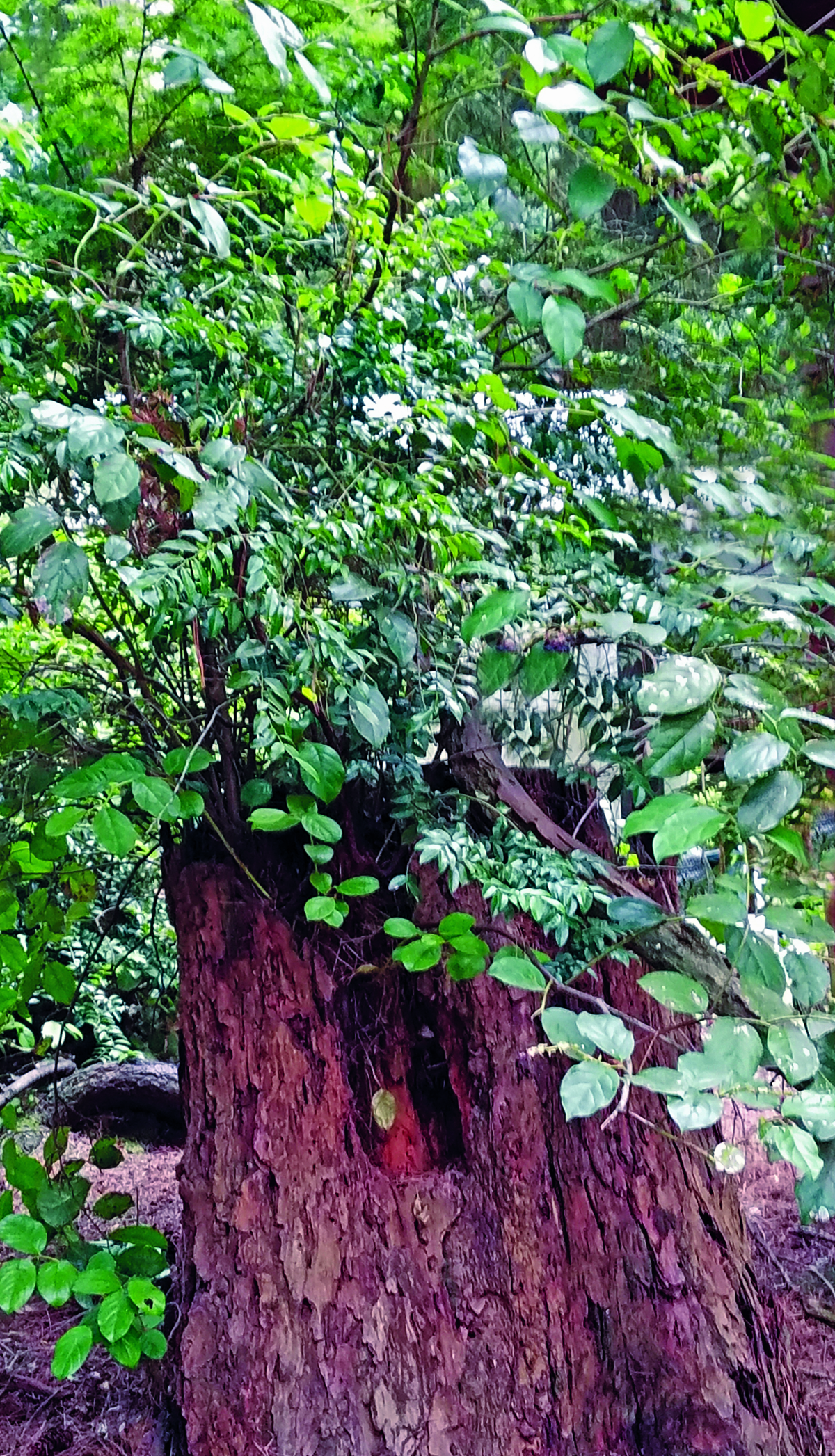
This old stump has grown a garden that includes salal, huckleberry, ferns, and a hemlock. Photo by Marian Blue
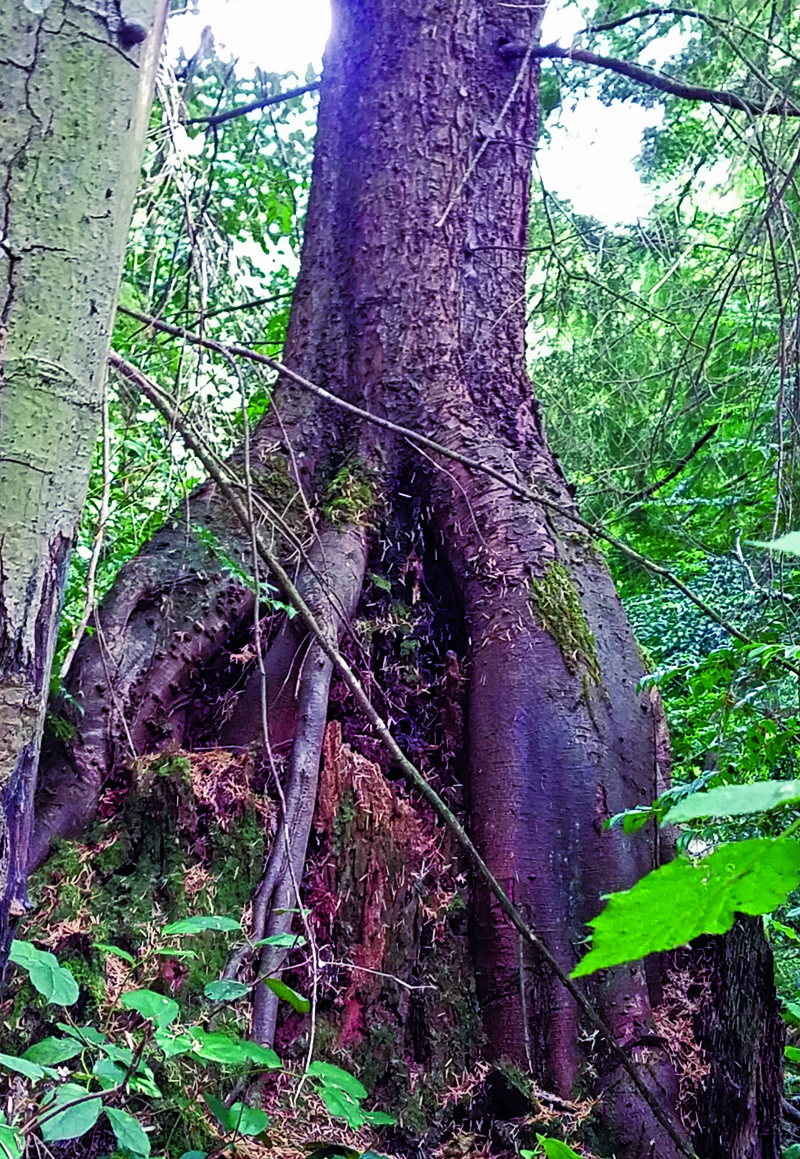
A hemlock got its start on a stump; now it appears long-legged as the stump rots away beneath it. Photo by Marian Blue
How Many?
The number of snags for your property depends on both the diameter and the type of tree. A general number is three snags of 12” diameter and one of 15” diameter per acre. In addition, at least 4 downed logs per acre helps to ensure a healthy habitat. More specific details and information, including use of habitat brush piles, are abundant online. This site is specifically for the northwest but includes other resources (Northwest Natural Resource Group). In some cases, landowners can find financial assistance in creating wildlife habitat (and corridors) on their property. A healthy environment benefits people and animals alike.
Make Your Own
If your property lacks adequate snags, you can make your own. A wide variety of ways of doing this is found at Washington Department of Fish and Wildlife . By killing some trees to create snags, you can improve the health of your property for both flora and fauna!
Bad Snag
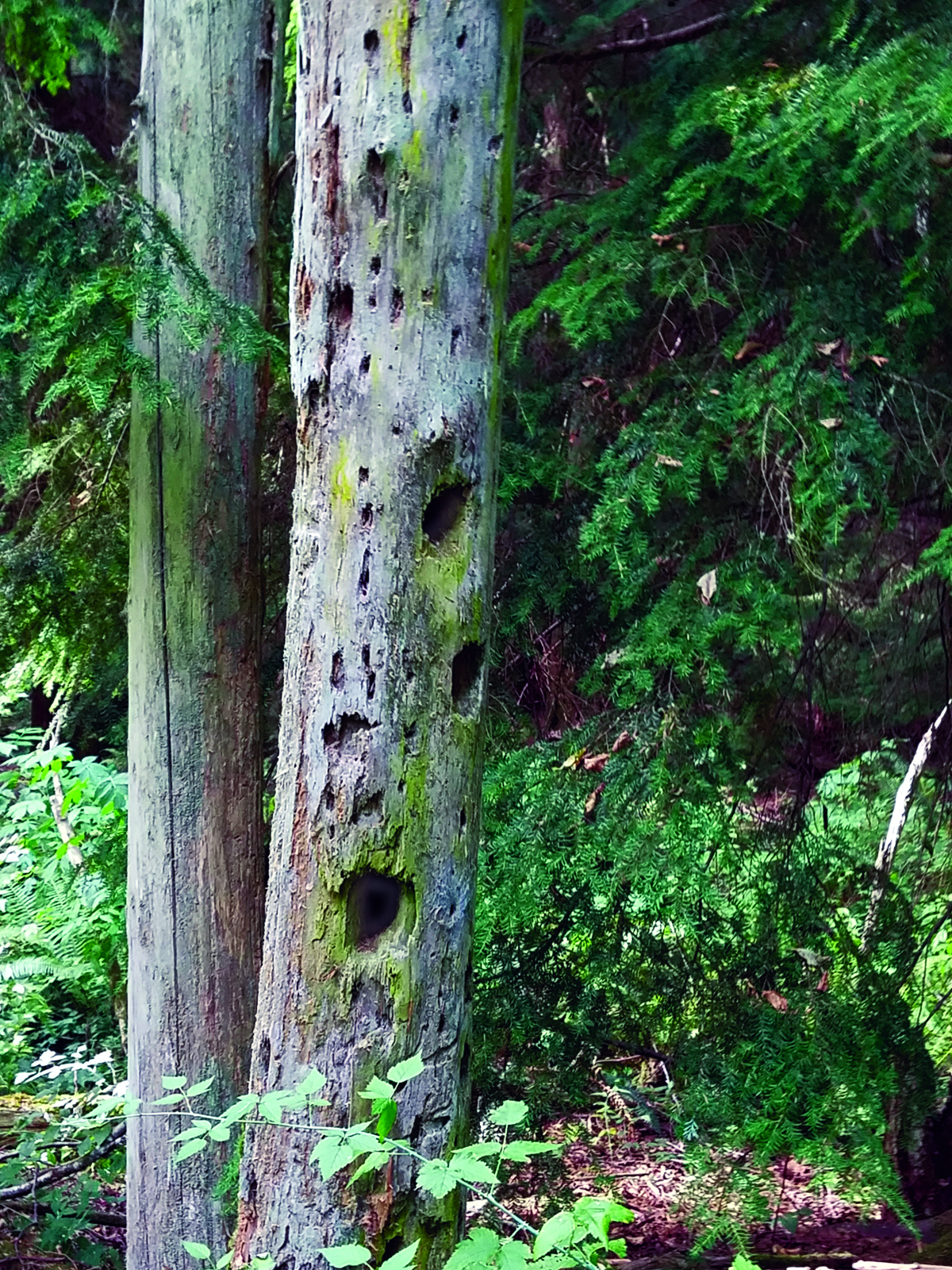
Snags are a natural resource for a healthy forest ecosystem. Photo by Marian Blue
Snags aren’t static. You don’t want a large snag next to your home or other structure.
In addition, because they attract insects, you don’t want snags where you’re combating insect invasions (next to your home, for instance).
Beautiful Snag
Beauty comes from understanding. Once you appreciate a snag’s value as a contributor to a healthy ecosystem, you can see the beauty in the same way animals do when looking for a new home or a good meal.
Next Month: Nature Writing
